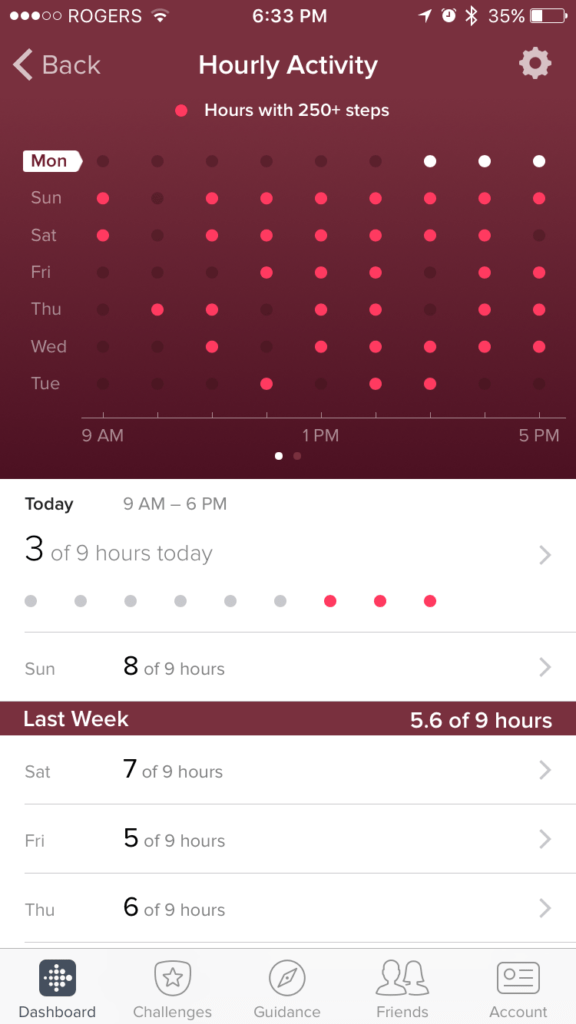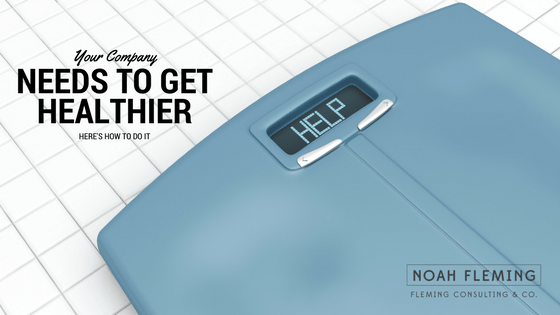I resisted for a long time, but earlier this year I did something I said I’d never need to do.
I’ve been wearing a Fitbit since January 1st, and I love it. One of the most powerful and useful things about this simple little device is a (sometimes annoying) reminder that happens every hour, on the hour, when I haven’t walked at least 250 steps.The little buzz on my wrist is a great reminder to get off my chair and walk, even just for a little bit. It’s a very good idea, but I didn’t pay much attention to it for a while–after all, it’s easy to turn it off or ignore the little buzzing.
The people at Fitbit obviously know this, though, because they have another feature that goes with the buzzing that makes it work incredibly well. That feature is a visual summary of how many hours each day I’ve hit the tiny 250 step goal. Looking at that, and seeing all of the blank spots where I missed it, has created a powerful behavior change in me.

That simple little reminder (and the knowledge that I’ll have to face any failures to act) has pulled me away from my desk, or away from watching television, or reading a book, and reminded me how a little bit of activity each day builds momentum and goes a long way.
A few weeks ago, I was walking through the shop floor of a prospective manufacturing client. The client explained how he was dealing with some recurring issues on the floor and he continued to look for new ways to get better. His approach impressed me quite a bit. He had his tech team build a simple little app which displayed on the hour, by the hour, real-time analytics on the errors and mistakes that were happening and by whom. The “live” updates were shown on a few large TV screens mounted in various sections on the floor for everyone to see. His rationale was that if he could add an element of gamification to the floor, the different teams, shifts, and departments on might end up competing to try and get better.
His insight was correct, but he underestimated the impact of this small change. Not only did individuals get better, but the majority of the mistakes stopped happening, and everyone got better altogether–almost instantly.
I think back to the impact my Fitbit has had on me, and I remind myself that the best results my clients have had are when they put simple, measurable, attainable tasks in front of their teams with the expectation they’ll be completed. That’s the power of a simple device like a Fitbit.
Since January 1st I’ve dropped 15lbs by walking every night, watching what I eat, and maintaining regular activity throughout the day. It hasn’t been hard, in fact, it’s been rather easy, but the simple, measurable, attainable reminders have helped tremendously to keep me on track. I’ve seen too many organizations where departments, sales teams, marketing teams, and others are left to their own devices, and they struggle to continuously generate results or make any meaningful progress.
That’s one of the reasons that the users of my Pick-3 Process are having incredible successes in their customer outreach. We remind people every day when they haven’t completed this simple, 5-15 minute task and it spurs them into action. After 60 days or so, the actions become habitual and part of the daily routine, but the reminders are still there. The only way to avoid the reminder is to complete the task!
The manufacturing client who displayed the TVs throughout the shop floor with real-time analytics experienced the same sort of benefit millions of people trying to lose weight have experienced. Sometimes, all you need it a bit of accountability combined with a few simple visual reminders of your progress and what you’re supposed to be doing. Are you trending up? Are you trending down? Are you lethargic and inactive, or are you making meaningful, continuous progress in the right direction?
Your Challenge For This Week: Pick one specific area of your business (sales, marketing, service, leadership, etc.) and ask yourself where you need more accountability? What required actions need constant reminders? For example, sales might come easy, but customer retention efforts are often ignored. Would daily reminders to touch base with existing customers be valuable? I don’t think anyone with half a brain would argue that wouldn’t be valuable, but so is walking 250 steps every hour, and most of us don’t do that either.
Remember – success comes not from big brilliant ideas, but from consistently investing in the things that matter. So pick one for your company, and ensure that those continual, small investments are being made!
